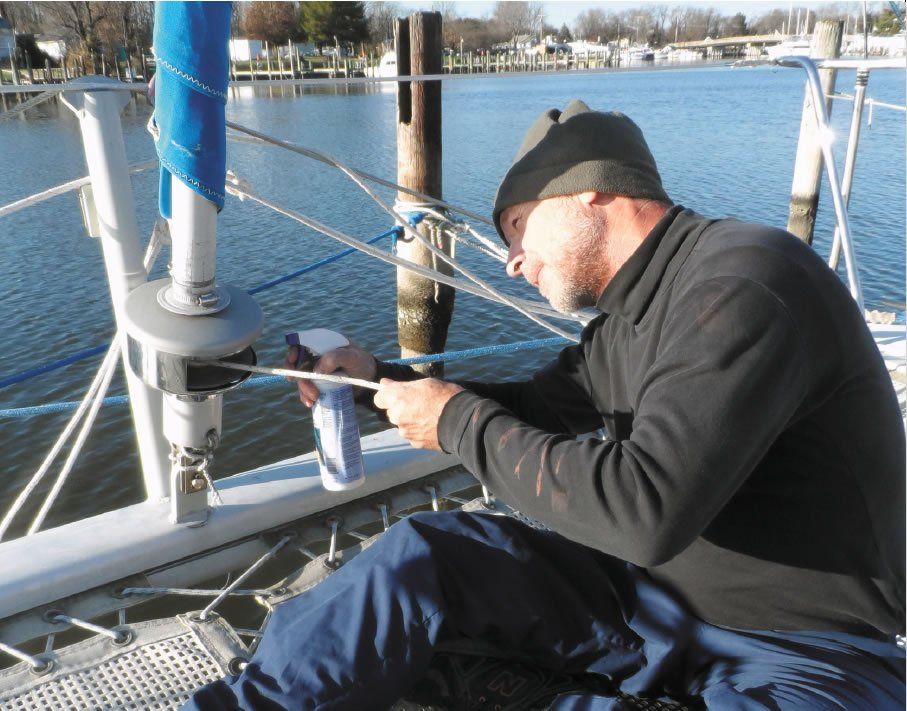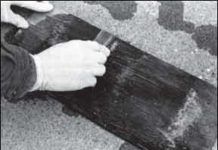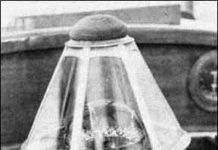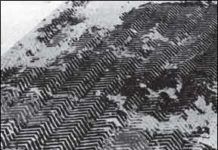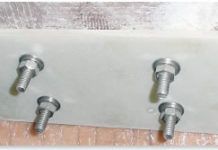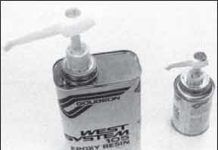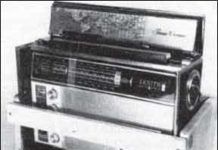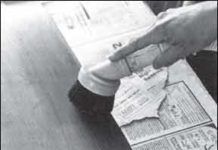Teak: A Little Effort Goes a Long Way
Probably nothing can make or break the appearance of a fiberglass boat more quickly than the appearance of the exterior teak trim. Contrary to popular belief, teak is not a maintenance-free wood that can be safely ignored and neglected for years at a time. Though teak may not rot, it can check, warp, and look depressingly drab if not properly cared for. Although it is not immune to neglect, teak is incredibly resilient, and can be brought back to life after remarkable amounts of abuse. Therefore, there is no excuse for drab, ugly exterior teak on any boat. Unlike other woods used for exterior trim, the grey weathering of teak rarely extends very far below the surface of the wood.
A Homemade Tiller Tender
On my Catalina 22 I have a tiller tender which has served me well for many years — and it didn't cost a cent. On top of the tiller are two pieces of 3/8" x 3/4" hardwood about 5" long. The two pieces are drilled horizontally, at the joint line, about 2" from the end to accommodate a 3" length of split neoprene which has an inside diameter slightly less than the diameter of the braided line which runs to the coamings. Two holes drilled vertically near the ends are used to fasten the device to the tiller.
Adjust Your Own Compass
With a little care, boatowners can do a perfectly adequate job of compensating their own compasses. The objective in compass adjusting is to neutralize the boat's magnetism, not to make the compass point in any particular direction. You can determine the effect of the boat's magnetic field on any compass bearing by simply turning the boat 180 for the amount that the compass overshoots or under‑shoots a 180' change is always just twice the effect of the boat's field on that heading.
Lay New Nonskid to Restore Worn Decks
We don't really know what the life expectancy of a fiberglass boat may be. There are lots of them out there that are more than 20 years old, still going strong. We do know, however, that no matter how longlived fiberglass may be as a structural material, over time the gelcoat surface commonly used in finishing fiberglass becomes porous and chalky, and has the unfortunate tendency to crack and craze. Gelcoat, in other words, weathers just as a painted surface will over time. With topsides, a tired gelcoat surface can be restored to better than new condition through the use of polyurethane paints, which can retain color and gloss for years. Decks, however, are another story.
Replacing Teak Decks, the DIY-er’s Way
Practical Sailor contributor and world cruiser Joe Minick details the steps he and his wife took to replace the wornout teak deck aboard their Mason 43, Southern Cross. Minick breaks down the major tasks of the three-month project and explains how they saved a lot of money by doing some of the work themselves. The article looks at the pros and cons of a do-it-yourself teak deck refit; planning and budgeting; step-by-step removal of hardware and the old deck; and the detailed installation process of the new deck.
PS Advisor: Rotten to the Core
Do you have any suggestions on a book or manual that explains how to replace a cored deck where most of it is soaking wet? I replaced a 1.5-square-foot area and was surprised to see that it was so wet and rotten that I could grab the wood core and squeeze it like a sponge.
Laid Teak Decks: Hallmark of Quality
There was a time when laid decks — teak, yellow pine, or fir — were the hallmark of a true yacht. The bare wood gave secure footing, easy maintenance, and reasonable protection from leaks. Since the advent of fiberglass, those same laid decks, almost universally of teak, have continued to represent that hallmark. However, they have become at least as much a cosmetic feature as a functional one. Teak decks, cockpit seats, cockpit sole, hatchtops, and cabin sole all lend themselves to being planked (or sheathed) in a traditional manner Almost no project can do more to "dress up" a boat than some laid decking, and it is a job the average boatowner can do himself. This article describes a simple method for laying decking, one we have used ourselves.
Design For: A Mug Rack
The modest mug, basic in shape and function, finds its way aboard all but the most elegant or the most rudimentary of vessels, because it is so useful. Equally at ease with soup or stew, coffee, tea, or chocolate, bread sticks, spoons, or even flowers, it serves faithfully in rough water and smooth. While almost universally carried aboard boats, the stowage of mugs varies as much as their uses. On some boats they rattle about in the galley sink, while in others they may be neatly nested in a drawer, hung from hooks, or (best of all) resting in proper racks.
Design For: Accessible Radio Rack
Radios occupy an important place in the contemporary sailing scene, supplying weather reports, time ticks, entertainment, and news. High quality radios are also expensive. In other words, they're valuable pieces of equipment and deserve to be protected. One way of protecting a radio is to store it securely chocked in a locker. Unfortunately that means it must be taken out to be used — always a bother and limiting accessibility — and when in use it's vulnerable, since it is not secured as when stowed
Sparkling Brightwork: Careful Attention to the Details
It takes practice to produce a perfect, mirror finish on varnished wood, but it is not so much a difficult task as an exacting one, where attention to detail and no short cuts are the secrets to success. Whether you are finishing new wood, refinishing old wood, or maintaining a finish in good condition, the basics are the same. Tools and materials required are sandpaper, vacuum cleaner or dusting brush, tack rag, brushes, and of course varnish and thinner If you are working from bare wood you may require stain or filler or a combination filler-stain. In cases where old wood has become discolored you will probably want to use a bleaching agent.



































